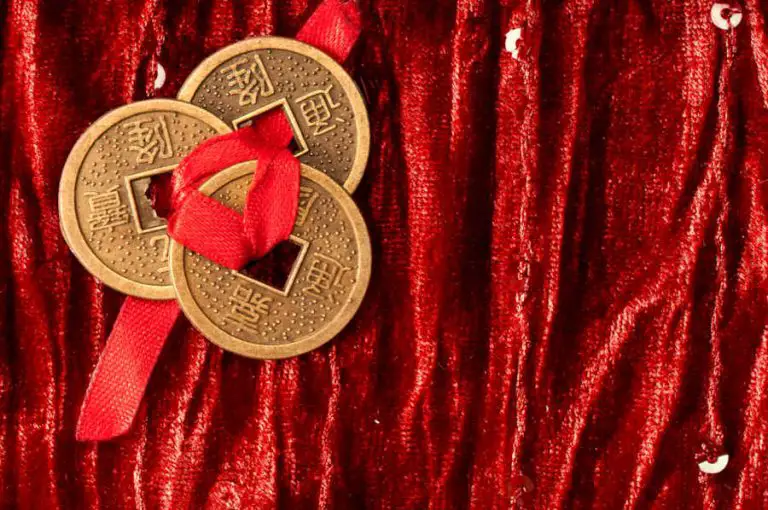Feng Shui (pronounced fung-shway) is an ancient aesthetic system developed by the Chinese that utilizes the laws of heaven and earth to improve life through the receipt of positive energy or qi (pronounced chi).
Applying the principles of Feng Shui in your life and your living/working spaces is all a matter of arranging and placing objects within your home or office so that harmony is achieved in your environment that allows for the positive flow of qi within your life.
Feng Shui is thought to bring positive energy to your living space, your relationships, your career, your family, and other areas of life.
Feng Shui has been practiced for thousands of years, originating in China but spreading to all areas of the world. (There are even entire buildings that have been erected using the principles of Feng Shui is not only their design and architecture but their interiors as well).
Feng Shui Main Points
Feng Shui is a multifaceted system rooted in ancient Chinese philosophy, blending environmental awareness with energy alignment. At its core, it is about creating harmony between humans and their surroundings by managing the flow of qi—the invisible life force that flows through all things. While it may seem intricate at first, understanding the key principles of Feng Shui can help you apply its wisdom effectively to your living or working space.
The Five Elements: The Heart of Feng Shui
A foundational concept in Feng Shui is the Five Elements Theory—Wood, Fire, Earth, Metal, and Water. Each element carries a specific type of energy and is associated with particular colors, shapes, directions, and materials. Harmonizing these elements in your environment can transform your space into one that supports your goals, emotions, and well-being.
- Wood – Symbolizes growth, vitality, and expansion. Represented by green hues, vertical lines, and plants.
- Fire – Embodies passion, inspiration, and visibility. Represented by red tones, triangular shapes, and lighting.
- Earth – Brings stability, nourishment, and grounding. Represented by yellows, browns, square forms, and ceramics.
- Metal – Encourages clarity, focus, and precision. Represented by white, gray, circular shapes, and metal objects.
- Water – Reflects flow, abundance, and intuition. Represented by black or dark blue, wavy shapes, and reflective surfaces.
Achieving balance among these elements depends on your personal goals and the energy flow within your space. For example, if you’re looking to improve communication, enhancing the Metal element may help. For attracting wealth, integrating Water and Wood elements is beneficial.

The Role of the Bagua Map
The Bagua Map is a central tool used to analyze energy flow within a space. It divides a floor plan into nine life areas, including Career, Family, Wealth, Fame, Love, Health, Creativity, Knowledge, and Helpful People. By identifying which area of your home aligns with each aspect of your life, you can make targeted adjustments using elements, colors, and symbolic objects.
Tools for Enhancing Qi Flow
Sometimes the structure of a space disrupts the natural flow of qi—this could be due to sharp angles, cluttered rooms, or poor light. Feng Shui offers various tools and remedies to realign and optimize energy:
- Mirrors – Redirect or expand qi, especially in cramped or dim areas.
- Crystals – Used to cleanse or activate energy, often hung in windows or doorways.
- Feng Shui Cures – Items like wind chimes, plants, lights, or fountains placed strategically to counteract energy blockages.
- Colors and Symbols – Each life area has associated colors and shapes that can be used to subtly activate its energy.
Working with a Feng Shui Consultant
Because Feng Shui takes into account complex factors such as compass directions, building orientation, and even your birth data, many people seek out professional geomancers (Feng Shui consultants). These experts can evaluate your space with precision and help you create a personalized plan to optimize energy flow in alignment with your lifestyle and aspirations.
Want to learn more about Feng Shui? Take a look at these Courses and Books – Aff.link
Feng Shui Origins
Feng Shui, which translates literally to “Wind” (Feng) and “Water” (Shui), has its roots in ancient Chinese cosmology, dating back over 4,000 years. Initially developed as a system for understanding the natural landscape, it was used to determine the most auspicious locations for settlements, agriculture, and especially for burial sites—reflecting the deep ancestral reverence in Chinese culture.
Yin House Feng Shui: Honoring the Ancestors
The earliest applications of Feng Shui were focused on the placement of gravesites, known as Yin House Feng Shui. The belief was that when ancestors were buried in places where qi flowed harmoniously, their descendants would receive blessings, prosperity, and protection. Great care was taken to select burial spots nestled among hills, near water, and protected from harsh winds—elements that were thought to reflect balance and abundance in the universe.

Yang House Feng Shui: Designing for the Living
Over time, the practice evolved into what is now called Yang House Feng Shui, which focuses on homes and spaces for the living. Early Chinese architecture began incorporating Feng Shui principles to optimize the flow of qi in daily life. Homes were ideally rectangular or square in shape, with balanced layouts, open courtyards, and mindful orientations to natural elements such as sun and wind. These principles were not just spiritual, but also deeply practical—encouraging ventilation, light, and connection to the land.
From Rural Wisdom to Urban Application
As Feng Shui became more codified, it gave rise to specialized schools of thought, particularly the Form School, which emphasized geographic features, and the Compass School, which introduced tools like the luopan (Feng Shui compass) to determine ideal orientations based on magnetic direction and time cycles. Together, these schools laid the groundwork for a comprehensive system that guided everything from imperial palace layouts to humble village homes.
Feng Shui in Modern Times
Today, Feng Shui continues to play a significant role in Chinese society and beyond. In China, it’s still used to assess the suitability of land for homes, businesses, and infrastructure. If a location is believed to restrict or misdirect the flow of qi, it may be avoided or redesigned to encourage harmony. This is not limited to traditional settings—many modern real estate developers and city planners incorporate Feng Shui analysis to enhance energy flow, functionality, and human well-being.
As the practice has traveled globally, many architects and homeowners now consult Feng Shui professionals during the planning phase of new construction, integrating ancient wisdom with modern design. Whether selecting a building site, aligning a front door, or arranging a living room, the origins of Feng Shui remain relevant: to live in balance with nature, ancestors, and the invisible energies that shape our lives.
Related reading: “A Concise Timetable of Feng Shui History“ –Opens in new tab
Feng Shui and Adjusting the Flow of Qi
According to Feng Shui principles, if the flow of qi is blocked, adjustments must be made to allow its free flow. This usually involves moving or changing something within the environment to promote the flow. There are some Feng Shui tools that can help to change or improve the flow of qi in specific spots of the home – such as:
- Fragrances- to clear up negative energy
- Heavy objects like statues or rocks- for stability and balance
- Living plants or objects- to bring vitality, growth and enhance potential
- Objects that move- to create movement
- Power sources- to promote change
- Reflecting objects- to enhance health
- Sound objects- to send a message and bring things to the attention
- Touch or the texture of elements- for stability, balance, and nurturing.
- Water objects- for prosperity and wealth

Feng Shui in Modern Architecture
In modern Asia, especially in Hong Kong, Feng Shui plays a prominent role in urban development. For example, the HSBC headquarters in Hong Kong was designed with Feng Shui in mind—featuring unobstructed views of Victoria Harbour for better qi flow, and even “cannon-shaped” structures to deflect negative energy from nearby buildings.
Global Examples:
In the West, many high-end hotels, real estate developers, and tech companies now consult Feng Shui experts. Apple’s Steve Jobs was reportedly influenced by Zen and Feng Shui in the design of Apple stores and the Apple Park campus, though more for energy harmony than traditional adherence.
Feng Shui and Personal Energy
Beyond physical space, Feng Shui also considers the personal energy you bring into a room. Keeping yourself balanced—through sleep, diet, breathwork, and intention—can enhance the energy of your environment. Personal Feng Shui also includes choosing favorable directions to face while working or sleeping, based on your Kua number, which is derived from your birth year and gender.
Final Thoughts
Feng Shui and the principles that govern its practice are becoming more common in the Western World and are no longer just an influence in Asian countries.
And although many changes have been made to the practice of the traditional Chinese Feng Shui system, Feng Shui has remained true to its core principles throughout all time.
By applying the principles of Feng Shui in your own life, you can promote success, wealth, romance, and happiness simply and easily.
Related reading: “Chinese Good Luck Charms To Bring Good Fortune” –Opens in new tab
Stay in Touch
 Join our newsletter by using the forms on this website or click here!
Join our newsletter by using the forms on this website or click here! Follow us on Google News
Follow us on Google News Follow us on Facebook
Follow us on Facebook
Featured Image By Pixabay.com




